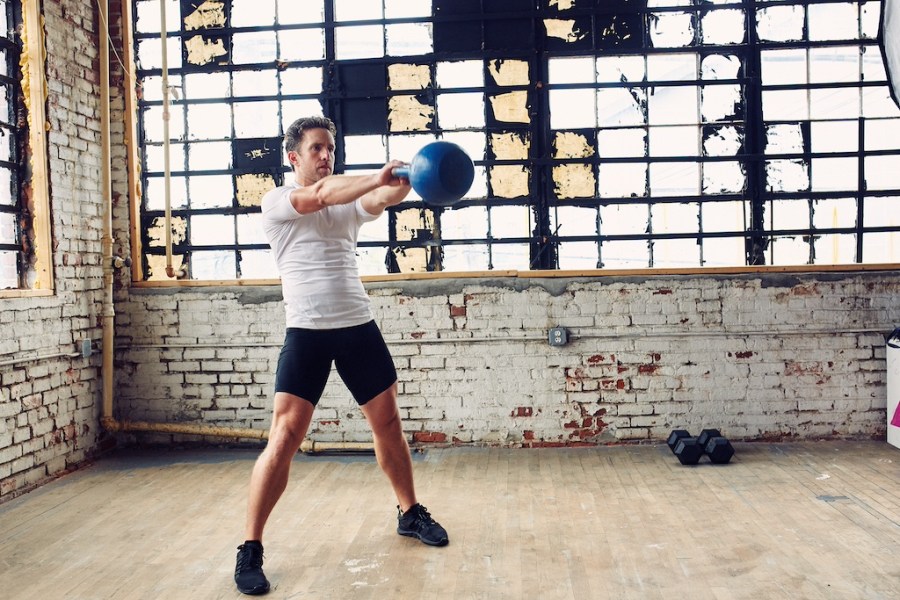Test your strength and aerobic staying power with this quick but hard-hitting full-body kettlebell workout from fitness and wellbeing coach Nik Naidoo.
Tight on time but sick of bodyweight HIIT workouts? Then grab a pair of the best kettlebells and try this full-body kettlebell workout.
Kettlebells are excellent tools for full-body workouts, because they allow for dynamic movements that engage multiple muscle groups at once. They can help improve strength, cardiovascular fitness, endurance, flexibility, and balance. What’s more, kettlebell exercises often involve functional movements that mimic activities of daily living, making them a great tool for overall fitness and functional strength.
For the workout below, starting with kettlebell swings activates your hips, glutes, shoulders and back, and if performed correctly will work you hard without affecting your performance in the other exercises.
The higher rep range for the squats, meanwhile, will give your upper-body muscles a little more recovery so you can continue the circuit without resting.
How to do this full-body kettlebell workout
If you’re an experienced trainer, I recommend repeating the circuit continuously without rest for 15 minutes (as many rounds as possible), but if you’re a beginner, rest for a maximum of 30 seconds at the end of each round.
You’ll need a pair of kettlebells for these exercises. We recommend using ones that offer a decent amount of resistance without being unwieldy. It’s always a good idea to do a warm-up to fire up your muscles before you work out.
1. Kettlebell swing (12 reps)
2. Kettlebell front squat (20 reps)
3. Kettlebell floor press (10 reps)
4. Kettlebell plank (30 secs)
5. Kettlebell shoulder press (10 reps)
6. Kettlebell towel curl (8-10 reps)
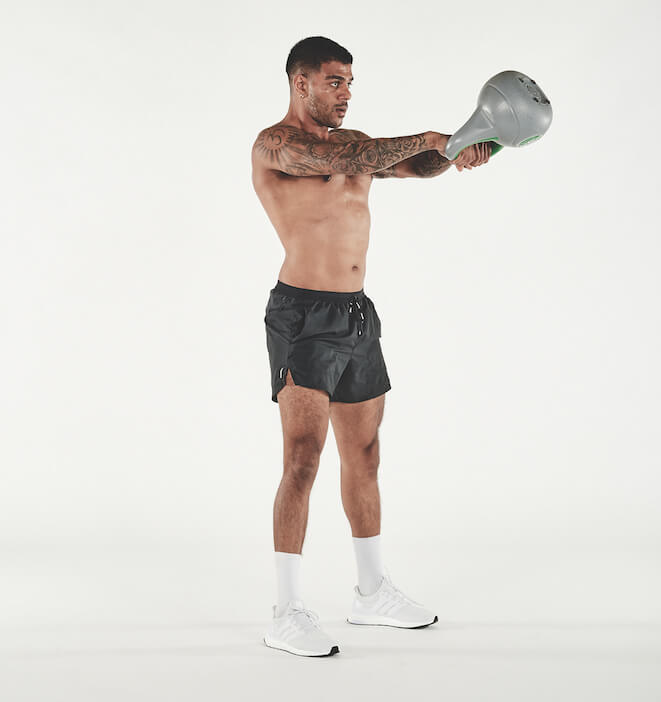
1. Kettlebell swing
Benefits of the kettlebell swing: Helps build strength and power, particularly in the posterior chain (muscles along the back of your body), which can improve athletic performance and everyday functional movements.
How to do it:
- Begin this full-body workout by holding a kettlebell in both hands at thigh height.
- Bend forward and swing it through your legs.
- Straighten up and thrust your hips to drive the kettlebell up until it reaches shoulder height.
- Complete 12 reps.

2. Kettlebell front squat
Benefits of the kettlebell front squat: The kettlebell front squat primarily targets the quadriceps, hamstrings, and glutes, helping to build lower body strength. It also engages the core muscles for stability and balance.
How to do it:
- Stand with feet shoulder-width apart, holding two kettlebells in the rack position.
- Squat as low as you can, then drive back up through your heels.
- Complete 20 reps.
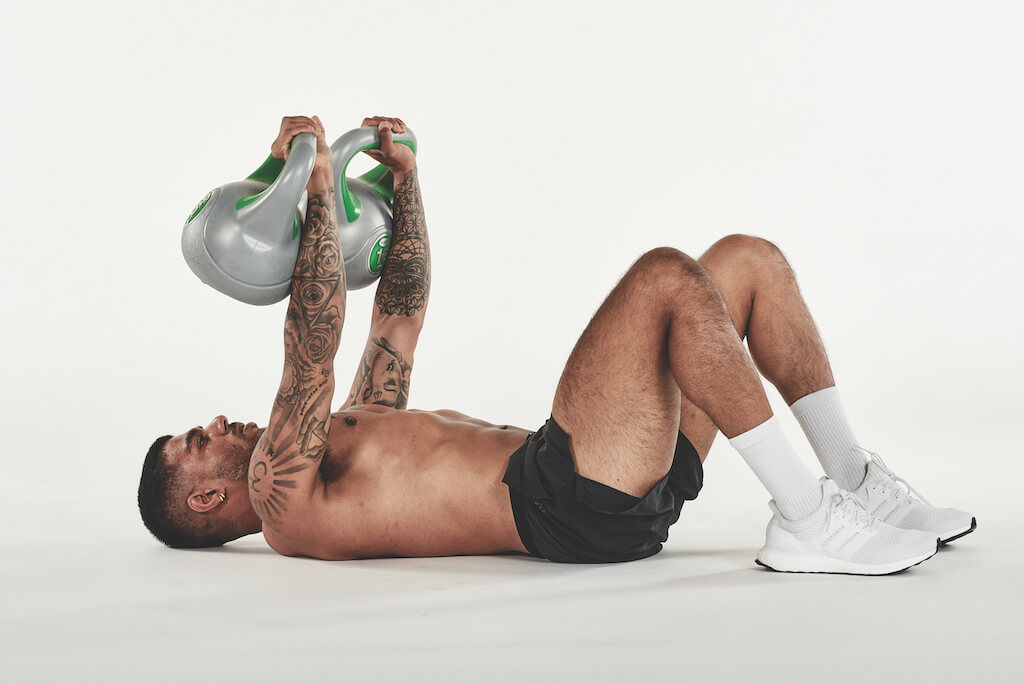
3. Kettlebell floor press
Benefits of the kettlebell floor press: The floor press primarily targets the chest, triceps, and shoulders, helping to improve upper body strength and muscle development.
How to do it:
- Lie on the floor, holding the kettlebells in the rack position on either side of your chest.
- Drive your feet into the floor and press the weights straight up.
- Lower the kettlebells slowly back to the start.
- Complete 10 reps.
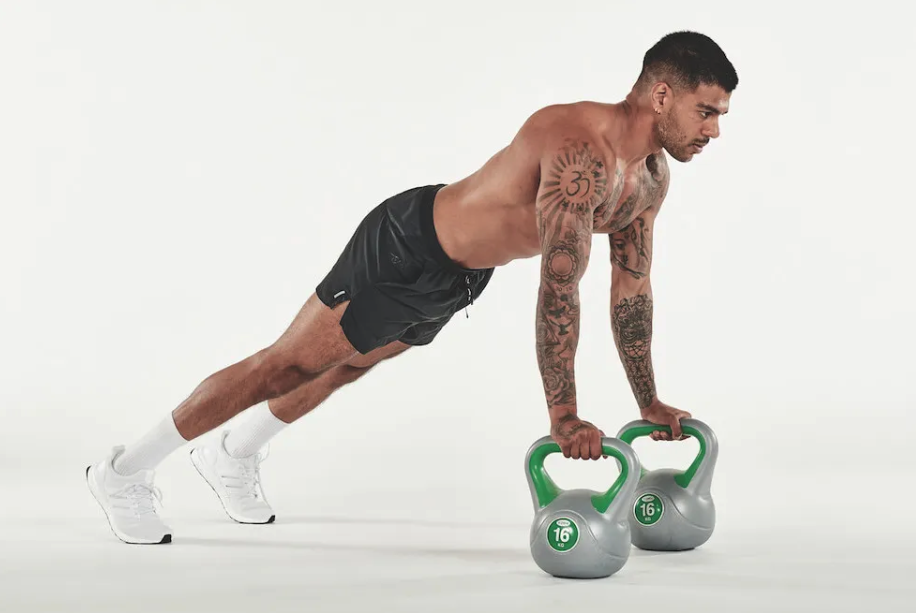
4. Kettlebell plank
Benefits of the kettlebell plank: The kettlebell plank engages not only the muscles of the core (including the rectus abdominis, obliques, and transverse abdominis) but also the stabilizing muscles throughout the body.
How to do it:
- Assume a high plank position, with hands on the kettlebells, directly under your shoulders.
- Hold for 30 seconds.
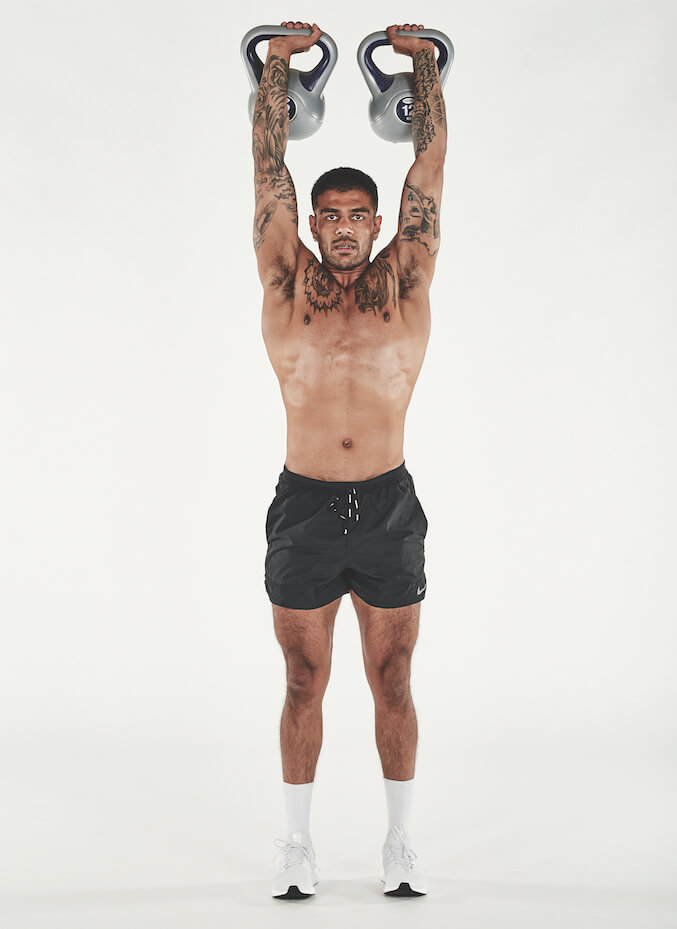
5. Kettlebell shoulder press
Benefits of the kettlebell shoulder press: Performing the shoulder press with kettlebells requires stabilization from the core and surrounding muscles to control the movement, enhancing overall stability and balance.
How to do it:
- Stand with feet shoulder-width apart, holding kettlebells in the rack position at shoulder height.
- Keep your core braced as you press the weights up.
- Lower back to the rack position.
- Complete 10 reps.
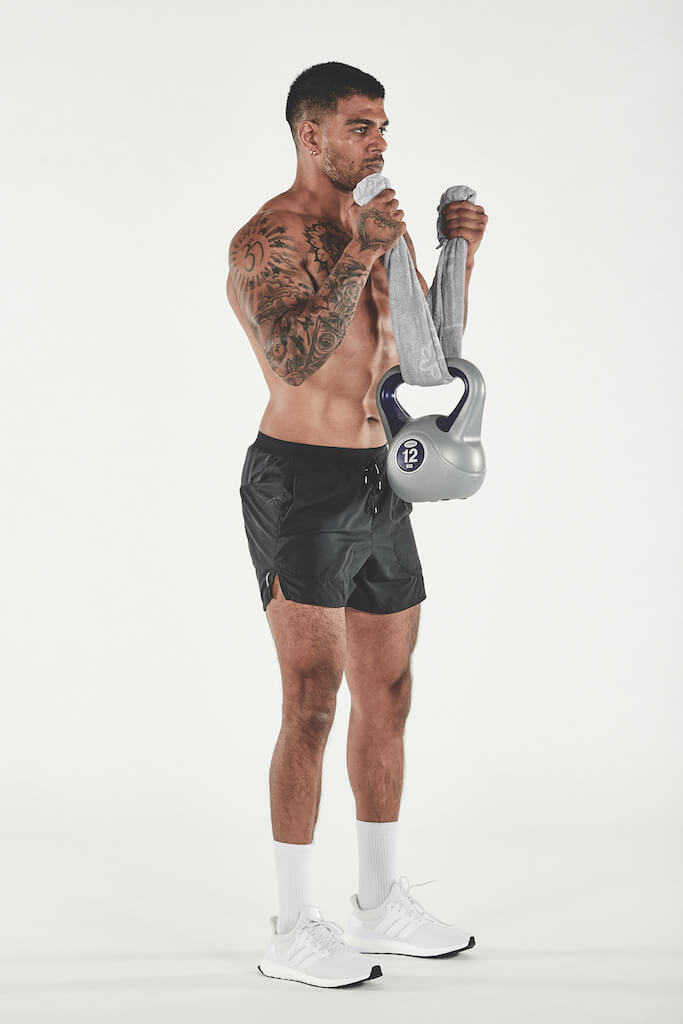
6. Kettlebell towel curl
Benefits of the kettlebell towel curl: By holding a towel attached to the kettlebell handle instead of gripping the handle directly, the towel curl increases the demand on your grip strength and forearms.
How to do it:
- Finish your full-body workout circuit by wrapping a towel around the handle of a kettlebell and holding both ends securely.
- Curl the weight up until your forearms are at mid-chest height.
- Return to the start with control.
- Complete 8-10 reps.
Benefits of training with kettlebells
The benefits of kettlebells are numerous: from the large range of different weights available, making them accessible for a variety of levels, to their small size and storability, which makes them an ideal bit of kit for home gyms.
We also find kettlebells to be great for linking cardio and strength training together, as they can help you burn fat and boost metabolism, while also building full-body muscle. Plus, because the best kettlebell exercises often require you to use different muscle groups at the same time, they are ideal for building up functional fitness. That means that with regular kettlebell training, you’re likely to feel stronger in your day-to-day life – whether carrying the groceries or lifting up your kids.
What are the risks of training with kettlebells?
Like all workouts – especially those involving equipment – there are a number of risks to be aware of. Firstly, it goes without saying that the heavier the weight, the greater the risk. So, make sure you choose a suitable weight for you and build up gradually to avoid excessive muscle strain.
Whichever weight you choose, there’s also a risk of injury if you drop the kettlebell. This is why it’s crucial to choose a kettlebell with good grip and handling, so you can feel safe and secure during your workout. Plus it’s a good idea to think about hand care for kettlebell training.
Your floors and furniture might also be at risk if you’re training with kettlebells at home. If you’re looking to protect your surroundings from scuffs, scratches and dents, we recommend opting for a kettlebell that’s coated in rubber – or try a water- or sand-filled option.
Related content:
Model: Nik Naidoo
Photography: Eddie Macdonald

